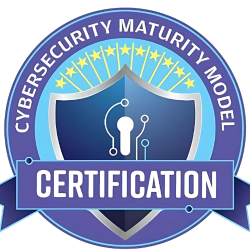8 Strategies for Tackling “Technical Debt” at Your Company

Did your company’s software system once feel sleek and agile? But now, does it resemble a tangled web of shortcuts, patches, and workarounds? Welcome to the realm of technical debt—a silent saboteur that grows over time, hindering efficiency and progress. Here at Hudson Sky, we help businesses in the Chicago area address and reduce technical debt, so they can focus on what matters.
What Is Technical Debt?
Think of technical debt as the interest you pay on a loan you never meant to take. Technical debt accumulates when companies choose quick IT solutions over sustainable, long-term ones. At first, it seems harmless, but as your system grows, those quick fixes slow progress and introduce complexities.
Addressing technical debt is essential to maintain a robust and efficient IT environment. Hudson Sky has outlined eight strategies for Chicago businesses to tackle technical debt effectively.
1. Identify and Prioritize Technical Debt
The first step in managing technical debt is to identify it.
- Conduct a Technical Debt Audit: Start by examining your network, software, and processes. Document areas where quick fixes were used and where improvements are needed.
- Categorize and Rank: Prioritize technical debt by impact. Not all issues need immediate attention; focus on those that affect performance, security, and stability first.
- Create a Technical Debt Register: Track technical debt to ensure it doesn’t get overlooked. A technical debt register is a valuable tool for monitoring debt reduction progress.
2. Integrate Debt Management into Your Workflow
Incorporating debt management into your daily workflow helps ensure continuous progress.
- Integrate into Agile Practices: Add technical debt tasks to your agile sprints and address them during retrospectives.
- Set Aside Time for Repairs: Dedicate time for debt reduction to prevent issues from accumulating.
- Track Progress: Use metrics to track improvements, helping you see where technical debt has been reduced and what still needs work.
3. Educate and Train Your Team
Creating awareness around technical debt is key to reducing and preventing it.
- Promote Awareness: Ensure your team understands technical debt’s impact on future projects and system stability.
- Provide Training: Equip your team with best practices to avoid adding new debt.
- Encourage Knowledge Sharing: Regular meetings foster knowledge sharing on technical debt solutions and prevention methods.
4. Improve Documentation
Documentation is essential for understanding and addressing technical debt.
- Document Existing Systems: Maintain comprehensive documentation, including hardware, software configurations, and network diagrams.
- Update Documentation Regularly: Keep documentation current to reflect system changes.
- Use Standardized Templates: Consistent documentation practices make it easier to manage, update, and share information.
5. Regularly Update and Refactor Systems
Routine updates and system refactoring help keep technical debt under control.
- Plan Regular Updates: Schedule updates during off-peak times. Regular updates improve performance and address minor technical debt.
- Focus on High-Impact Areas: Prioritize updates for critical systems and high-usage areas.
- Make Incremental Improvements: Small, manageable updates are easier to deploy and pose less risk than large overhauls.
6. Optimize Security Practices
Comprehensive security practices help keep technical debt at bay by minimizing vulnerabilities.
- Install Comprehensive Security Measures: Use firewalls, encryption, and regular audits to safeguard your systems.
- Adopt Proactive Security: Regularly update security protocols and software to prevent vulnerabilities.
- Automate Security Monitoring: Automation reduces the risk of human error and ensures consistent monitoring.
7. Manage Dependencies
Managing dependencies effectively minimizes technical debt risks.
- Track and Update Dependencies: Maintain a list of all dependencies and update them to ensure compatibility.
- Use Dependency Management Tools: Automate dependency tracking and updates for increased efficiency.
- Isolate Critical Dependencies: Isolate critical components to reduce their potential impact on your system.
8. Foster a Culture of Continuous Improvement
A culture of continuous improvement helps address technical debt proactively.
- Encourage Continuous Learning: Support skill development to equip your team to tackle technical debt.
- Celebrate Successes: Recognize and reward improvements in IT quality and maintainability.
Partner with an IT Provider Focused on Reducing Technical Debt
Managing technical debt is essential for Chicago businesses that want their IT systems to be reliable, secure, and scalable. Here at Hudson Sky, we take a proactive, long-term approach to help clients avoid shortcuts that lead to technical debt. Our mission is to keep your IT systems efficient and future-ready, empowering your business to grow without being bogged down by outdated systems.
Contact Hudson Sky today at (844) 319-5741 to discuss your IT systems and learn how we can help you reduce technical debt and improve efficiency. We’re here to support Chicago-area businesses with solutions tailored to your unique needs.
—
This Article has been Republished with Permission from The Technology Press.
